|
Thomas CALLIGARO
Département Recherche
Centre de Recherche et de Restauration des Musées de France
Paris
France
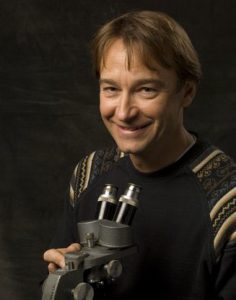
|
Comparison of XRF and PIXE imagings of paintings
2-D scanning X-ray spectrometry is an elemental imaging technique increasingly used for the investigation of historical paintings. Its interest stems from its ability to reveal paint material distribution within entire works by means of elemental signatures of the employed pigments. The elemental distribution map can in turn be compared with high interest to pictures recorded using more standard imaging techniques (e.g. Visible, UV, IR photography and X-ray radiography), providing curators, art historians and restorers with useful information concerning the painter techniques and the preparation of restoration of their works.
The present contribution details two complementary implementations of 2D scanning XRS of paintings. The first and most popular one relies on the use of an incident scanning sub-millimetre X-ray beam (2D-XRF aka MA-XRF), as introduced at the synchrotron and subsequently transposed to the laboratory. The second and less common approach is based upon a MeV external proton micro-beam (scanning external beam PIXE). While bearing similarities, each approach exhibits particular features and limitations. On the one hand, excitation with a proton beam instead of an X-ray beam confers to PIXE attractive assets such as an analysed depth that vary with the beam energy, an improved yield for light element compared to heavier ones, and a flexible beam scanning policy. On the other hand, a scanning X-ray beam is probing deeper, induces unique features such as Compton scattering and is less susceptible to induce modifications in paint materials than ion beams.
The capabilities and limitations of XRF and PIXE imaging of paintworks are exemplified by case studies carried out using two systems: a transportable, versatile and cost-effective 2D-XRF scanner designed and built at the C2RMF [1] and the external scanning microbeam line of the AGLAE accelerator facility [2]. Leonardo da Vinci’s masterpieces were investigated using 2D-XRF and paintings from the 18th and 19th c. using both 2D-XRF and 2D-PIXE.
[1] E. Ravaud, L. Pichon, E. Laval, V. Gonzalez, M. Eveno, T. Calligaro, Development of a versatile XRF scanner for the elemental imaging of paintworks, Appl. Phys. A122 (2016) 17
[2] T. Calligaro, V. Gonzalez, L. Pichon, PIXE analysis of historical paintings: Is the gain worth the risk?, Nucl. Instr. And Meth. B363 (2015) 135 |
Doctor in high energy particle physics from Strasburg University (France). First involved in the to the AGLAE accelerator implementation in the Louvre museum. Author of some 100 rank A papers, three textbook sections and several cultural catalog chapters. Regularly invited for lectures in international conferences on heritage applications of nuclear techniques. Member of the international boards of scientific communities (Particle Induced X-ray Emission PIXE and European Conference on Accelerators Applied in Research and Technology ECAART). Consultant in nuclear science for the International Agency of Atomic Energy (IAEA). Promoter of novel radiation-based instruments and methods (new in-air implementations of IBA methods, development of laboratory-based XRF imaging equipment for paintings, new processing packages for the quantitative analysis of CH materials using portable XRF). Expert in the analysis of minerals in Cultural Heritage with radiation methods, in particular fine stones and gems (lapis lazuli, jade, garnets, obsidian, etc.). |
Gerald FALKENBERG
Scientist in Charge of the Hard X-ray Micro/Nanoprobe Beamline P06
Photon Science at DESY
Hamburg
Germany |
X-ray microscopy at the Hard X-ray Micro/Nano-Probe beamline P06 at PETRA III
After 3 years of user operation the experimental conditions at the Hard X-ray Micro/Nano-Probe beamline P06 at the synchrotron radiation facility PETRA III are reviewed and demonstrated by some key applications. Two different permanent setups are provided at the P06 beamline: the Nanoprobe and the Microprobe.
The Nanoprobe experiment utilizes nanofocusing lenses (NFL) for focusing the coherent part of the X-ray beam to typical beam sizes of 50-100 nm. It is designed for scanning coherent X-ray diffraction microscopy (ptychography) [1], but is used also for nano-XRF and nano-XRD imaging. Currently the Nanoprobe experiment is upgraded for highest stability including interferometric sample and optics position control to improve ptychographic imaging towards 10 nm resolution, ptycho-tomography [2] and resonant ptychography [3].
The Microprobe is a versatile experiment for scanning X-ray microscopy with X-ray fluorescence, X-ray absorption spectroscopy and X-ray diffraction contrasts. A KB system focusses a beam of 1011 photons/s down to 300 nm focus size in the energy range 5 – 21 keV. Compound refractive lenses (CRL’s) are used at higher energies up to 50 keV. Advanced detector technology, namely the Maia X-ray fluorescence detector and the EIGER X 4M hybid photon counting detector, enable on-the-fly scanning schemes with millisecond dwell times per scan pixel. The ability to collect megapixel images in less than an hour facilitates series of 2D images for full 3D fluo-tomography, spectro-microscopy, time-resolved in-situ microscopy or other multi-dimensional microscopic experiments. The microprobe setup is frequently applied for biological applications [4] including frozen hydrated tissue samples measured in a cryo-stream or a dedicated cryogenic vacuum chamber and some studies are addressed. Other examples are full 3D fluo-tomography on a catalytic particle [5] and spectro-microscopy on Lithium-ion based battery electrodes [6].
The opportunity of the talk is also used to announce a possible upgrade project towards PETRA IV. In ten years from now the (almost) diffraction limited storage ring will provide ideal conditions for various kinds of X-ray microscopies.
[1] A. Schropp, R. Hoppe, J. Patommel, D. Samberg, F. Seiboth, S. Stephan, G. Wellenreuther, G. Falkenberg, C.G. Schroer, Appl. Phys. Lett. 100 (2012), 253112.
[2] H. Dam, T.R. Andersen, E.B.L. Pedersen, K.T.S. Thyden, M. Helgesen, J.E. Carle, P.S. Jørgensen, J. Reinhardt, R.R. Søndergaard, M. Jørgensen, E. Bundgaard, F.C. Krebs, J.W. Andreasen
Adv. Energy Mater. 5 (1) (2014) 1400736.
[3] R. Hoppe, J. Reinhardt, G. Hofmann, J. Patommel, J.-D. Grunwaldt, C.D. Damsgaard, G. Wellenreuther, G. Falkenberg, and C. G. Schroer, Appl. Phys. Lett. 102 (2013), 203104.
[4] G. Falkenberg, G. Fleissner, D. Neumann, G. Wellenreuther, P. Alraun, G. Fleissner
J. Phys., Conf. Ser. 463 (2013) , 012016.
[5] S. Kalirai, U. Boesenberg, G. Falkenberg, F. Meirer, B.M. Weckhuysen,
ChemCatChem 7, (2015), 3674-3682.
[6] U. Boesenberg, M. Falk, C.G. Ryan, R. Kirkham, M. Menzel, J. Janek, M. Fröba, G. Falkenberg, U. Fittschen, Chemistry of materials 27(7), (2015), 2525-2531. |
Gerald Falkenberg made his PhD in experimental physics at the University of Hamburg in 1998 in the field of Scanning Tunneling Microscopy on semiconductor surfaces. Since then he is scientist in charge of X-ray Microprobe beamlines at the storage rings DORIS III and PETRA III at the Deutsches Elektronen-Synchrotron DESY. His research interests are focussed on biological and bio-medical questions.
|
Ursula FITTSCHEN
Department of chemistry
Washington State University
Pullman, WA
USA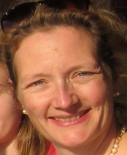 |
Ionomics in plants: An approach using X-ray fluorescence
U. E. A. Fittschen, R. Hoehner, S. Tabatabaei, M. Radtke, H.-H. Kunz
Metal ion gradients across biomembranes play a fundamental role in cellular function. In plant tissue, this includes energy storage, nutrient distribution, signaling pathways and enzymatic reactions. However, ion gradients are not static and thus can change depending on leaf age, nutrient supply, light availability or external abiotic stress factors, e.g. soil salinity. Studying these spatial ion fluxes in correlation to factors such as leaf age and illumination provides insights into ion transport and its significance for plant function and allows for linked analyses of biochemical pathways and ion fluxes e.g. in photosynthesis under varying conditions in wild-type and mutant plants. Accordingly, research efforts in analysis of essential metal ion in plants, in a similar fashion to proteomics and genomics referred to as ionomics has been intensified [1]. Only recently, the capacities of synchrotron radiation sources in plant research have been highlighted [2]. Here we present the investigation of K, Ca, Na and Mg ions in wild-type and mutant plant leaf tissue using total reflection X-ray fluorescence (TXRF) and µ-XRF imaging. The TXRF analysis enables us for analysis of minute amounts of plant leave tissue. Low Z abundant metal ions i.e. Na and Mg were determined by atomic absorption spectroscopy. We also used laboratory based and synchrotron based micro-XRF imaging to probe elemental distribution. We observed significant changes in ion content between plant mutants and controls that were related to strong plant phenotypes.
[1] Salt et al. Annu. Rev. Plant Biol. 59: 709-733 (2008) doi: 10.1146/annurev.arplant.59.032607.092942.
[2] Vijayan et al. Plant Cell Physiol. 56(7): 1252–1263 (2015) doi:10.1093/pcp/pcv080 |
Ursula Fittschen has a PhD in chemistry from University of Hamburg. After a period of being research fellow at University of Hamburg and at Los Alamos National Laboratory Ursula got a position as assistant professor at University of Hamburg. Currently working as assistant professor in analytical chemistry at Washington State University.
Our group is active on the field of micro analytical elemental determination and speciation using TXRF and elemental and species imaging using micro-XRF. With that we contribute to a better understanding of materials and environmental-, plant- and energystorage systems. Our long term goal is to design and realize accurate elemental determination and speciation in dynamic systems with complex components to determine elemental mobility and elemental species modification relevant to a broad range of applications. |
Shinsuki KUNIMURA
Faculty of Engineering,
Tokyo University of Science
Japan
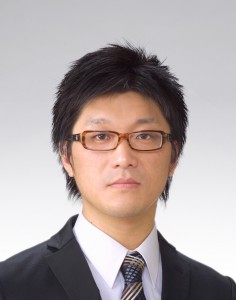 |
Total reflection X-ray fluorescence analysis using weak white X-rays
Portable total reflection X-ray fluorescence spectrometers using weak white X-rays (i.e. the continuum X-rays or both the characteristic X-rays and the continuum X-rays from a low power X-ray tube) as excitation source have been developed since 2006 [1-3]. Detection limits of a few tens of picograms were achieved for Cr and Co even when using white X-rays from an X-ray tube operated at 1 W (Tube voltage: 20 kV, Tube current: 70 uA) [2]. A portable spectrometer with a small vacuum chamber makes it possible to perform measurements in vacuum. Measuring in vacuum led to significant reduction of the spectral background, and a detection limit of 8 pg for Cr was achieved with an X-ray tube operated at 5 W (Tube voltage: 25 kV, Tube current: 200 uA) when the measurement was performed under a vacuum condition produced by a diaphragm pump with a base pressure of 2×103 Pa [3]. Measuring in vacuum also makes it possible to detect a weak Cd La line that overlaps with the Ar K-lines from air containing 0.9% of Ar, and a detection limit of 0.2 ng was achieved for Cd when measuring the Cd La line in vacuum [4]. A quartz glass substrate and a diamond-like carbon (DLC) coated quartz glass substrate [5] were usually used as a sample holder. Recently, we have used collodion film as a sample holder, and we have reported that a detection limit of Cr obtained with a collodion film sample holder was as low as that obtained with a DLC coated quartz glass sample holder. When using either a quartz glass substrate or a diamond-like carbon (DLC) coated quartz glass substrate as a sample holder, it is difficult to detect a trace amount of Si. This is because the Si Ka line originating from quartz glass is detected. On the other hand, several tens of nanograms of Si were detected when using a collodion film sample holder. In this presentation, detection limits of several elements obtained by a portable spectrometer with a collodion film sample holder will be shown. Results of measurements of environmental and food samples performed with a collodion film sample holder will also be presented.
[1] S. Kunimura, J. Kawai, Anal. Chem., 79(6), 2007, 2593.
[2] S. Kunimura, J. Kawai, Analyst, 135(8), 2010, 1909.
[3] S. Kunimura, S. Kudo, H. Nagai, Y. Nakajima, H. Ohmori, Rev. Sci. Instrum., 84(4), 2013, 046108.
[4] S. Kunimura, K. Amagasu, ISIJ Int., 55(12), 2015, 2697.
[5] S. Kunimura, H. Ohmori, Analyst, 137(2), 2012, 312.
[6] S. Kunimura, K. Nakano, T. Shinkai, ISIJ Int., 55(8), 2015, 1794. |
Dr. Shinsuke Kunimura received a Bachelor of Engineering from Kyoto University in 2004, a Master of Public Health from Kyoto University in 2006, and a Ph.D. in Engineering from Kyoto University in 2009. He was a JSPS (Japan Society for the Promotion of Science) Research Fellow from 2008 to 2010 and a Special Postdoctoral Researcher at RIKEN (The Institute of Physical and Chemical Research) from 2010 to 2012. He has been a Junior Associate Professor at Faculty of Engineering, Tokyo University of Science since 2012.
|
| Juan Jose LEANI
Enrique Gaviola Physics Institute. National Scientific and Technical Research Council (CONICET), Argentina.
Atomic and Nuclear Spectroscopy Group, National University of Córdoba (UNC), Argentina.
Nuclear Science and Instrumentation Laboratory. International Atomic Energy Agency (IAEA), Argentina |
Core-level RIXS: A versatile Spectroscopic Tool for Chemical State Assessments
In X-ray fluorescence analysis, spectra present singular characteristics produced by the different scattering processes. When atoms are irradiated with incident energy lower but close to an absorption edge, scattering peaks appear due to an inelastic process known as Resonant Inelastic X-ray Scattering (RIXS) or X-ray Resonant Raman Scattering (RRS) [1]. These RIXS/RRS peaks present a series of particular features; between them, a characteristic long-tail spreading to the region of lower energies. It has been recently observed that, hidden on this tail, there is valuable information about the local environment of the atom under study [2].
During the last five years, several works have been shown the first applications of RIXS (or RRS) for the discrimination, determination and characterization of chemical environments in a variety of samples and irradiation geometries and even combined with other spectroscopic techniques [3-8]. One of the most important features of the experimental setup reported in these works is the use of an energy dispersive low-resolution spectrometer for measuring the RIXS spectra.
In this presentation, the basis, advantages, general highlights and latest applications of this novel and versatile tool for chemical state determinations will be presented and discussed.
[1] A.G. Karydas and T. Paradellis, J. Phys. B: At., Mol. Opt. Phys. 30, 1893 (1997).
[2] H.J. Sánchez, J.J. Leani, M.C. Valentinuzzi, and C.A. Pérez, Journal of Analytical Atomic Spectrometry 26, 378 (2011).
[3] J. Robledo, H.J. Sánchez, J. J. Leani, C. Pérez, Analytical Chemistry 87, 3639 (2015).
[4] J.J. Leani, H.J. Sánchez and C. Pérez, Journal of Spectroscopy Volume 2015, Article ID 618279, 7 pages (2015).
[5] J.J. Leani, H.J. Sánchez, D. Pérez, C. Pérez, Analytical Chemistry 85, 7069 (2013)
[6] J.J. Leani, H.J. Sánchez, M.C. Valentinuzzi, C. Pérez and M. Grenón, Journal of Microscopy 250, 111 (2013).
[7] H.J. Sánchez, J.J. Leani, C. Pérez and D. Pérez, Journal of Applied Spectroscopy 80, 920 (2013).
[8] J.J. Leani, H.J. Sánchez, M.C. Valentinuzzi and C. Pérez, X-Ray Spectrometry 40, 254 (2011).
|
Juan José Leani has a tenure-position as full-time researcher at the National University of Córdoba and at the National Scientific and Technical Research Council (CONICET) of the Ministry of Science and Technology of Argentina.
His PhD degree in physics was devoted to Synchrotron-radiation induced RIXS. Since then, he has been working on synchrotron and X-ray non-conventional related techniques, in facilities like the Brazilian Synchrotron Light Source and Elettra Sincrotrone Trieste in Italy.
He is currently working as well at the Atomic and Nuclear Spectroscopy Group, Non-Conventional Techniques Laboratory, of the National University of Córdoba, Argentina, and the Nuclear Science and Instrumentation Laboratory, Department of Nuclear Sciences and Applications of the International Atomic Energy Agency (IAEA).
He is an author on a number of peer-reviewed publications in prestigious international journals and have many contributions to international scientific meetings in his field of expertise. |
| Liqiang LUO
National Research Center of Geoanalysis
Beijing
China
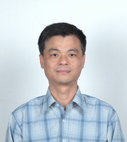
|
Why are μXRF, XANES and in vivo XRF so important in biogeochemistry?
As a toxic element without any beneficial biological function to human body, lead has been paid special concerns over its harmful effects on environments, ecosystem and human health. In order to reduce the risks of the diseases caused by Pb, one always wants to know how Pb enters ecosystem and take harms to human health.
On the basis of μXRF, XANES and in vivo XRF, the study aimed at (1) conducting the biogeochemical investigations into revealing the effects of the mining activities with Pb-Zn on the biochains in ecosystem, (2) determining the distribution and species of Pb in the biogeochemical samples, (3) identifying the origins, transformation and translocation of Pb in biochains, and (4) evaluating the harmful degree of Pb on the human health.
The current study shows that in the vicinity of the Pb-Zn mines, the significant high concentrations of Pb were detectable, and the biochain in the ecosystem was polluted. By μXRF and XANES, the distribution and species of Pb in soils, plants, earthworms and bacteria were determined, and the obtained results revealed that the species of Pb and its transformation played a key role in controlling the biogeochemical processes and the translocation of Pb in biochains. And further investigation shows that the concentrations of Pb in the blood samples from a part of resident who lived in the vicinity of the lead-zinc mines were beyond the regulated maximum levels. Moreover, it was found by in vivo XRF that the concentrations of Pb in the bones of the resident who lived in the polluted area were significant higher than the reference persons who resided in no polluted area. it is a more important evidence and concerns that a long-term and chronic harmful effects of Pb might have been made on the human health in the area by the mining activities. Therefore, it would be next works how to make a phytoremediation in the areas. |
Liqiang LUO is Senior Scientist and Professor of Analytical Chemistry and Geochemistry in National Research Centre of Geoanalysis (NRCGA), Beijing, China. He is also Professor in Graduate School of Chinese Academy of Geosciences in Beijing, and China’s University of Geosciences in Beijing and Wuhan. He has been Vice President in NRCGA since 2006. He earned his PhD from the Shanghai Institute of Ceramics, CAS in 1997. He was a visiting scientist in the department of Medical Physics and Applied Radiation Sciences, McMaster University, Canada, from 2003 to 2005. He has been invited to give lectures as a keynote or an invited speaker in different international conferences on X-ray spectrometry and its application to biogeochemistry. He is Editor-in-Chief of Chinese Rock and Mineral Analysis, Associate Editors of X-ray Spectrometry and Chinese Spectroscopy and Spectrometry, and Chair of Chinese Association of Rock and Mineral Analysis, CSG. His main research interests are in X-ray spectrometry, biogeochemistry and environmental pollution. Some of his recent researches has been on the effects of environment pollution on ecosystem and human health by micro x-ray fluorescence spectrometry, synchrotron radiations X-ray absorption near-edge structure (XANES) and in vivo XRF. |
| Victor MALKA
LOA ENSTA / Ecole Polytechnique
Chemin de la Hunière
Palaiseau cedex
France
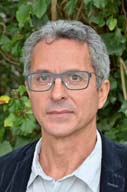
|
Ultra-brigth X ray Beams with Laser Plasma Accelerators
The production of bright compact X-ray beams is a goal pursued since many years by a growing number of groups worldwide in the laser-plasma communities [1]. Such sources offer compactness, reasonable cost and full synchronization with another source (particle or radiation) generated by the same laser pulse. It could bring, into a university scale laboratory, a powerful tool to satisfy the need for a wide variety of applications, such as time resolved studies of structural dynamic at the femtosecond resolution, x-ray or gamma-ray radiography with a micrometer resolution and x-ray microscopy. I will show here the different mechanisms, such as betatron source [2], all optical Compton source [3], plasma wigglers [4], that we have explored this last decade, using the new concept of laser plasma accelerators [5] that allow to produce such bright X-ray beam. I will show first applications for non-destructive material inspection [6] or phase contrast imaging [7] for medical purpose.[1] S. Corde et al., Rev. of Mod. Phys., 85,1 (2013)
[2] A. Rousse et al., Phys. Rev. Lett. 93,13 (2004)
[3] K. Ta Phuoc et al., Nature Photonics 6, 5 (2012)
[4] I. Andriyash et al., Nature Communications 5, 4736 (2014)
[5] V. Malka, Phys. of Plasmas 19, 055501 (2012)
[6] V. Malka et al., Nature Physics 4, 447 (2008)
[7] S. Fourmaux et al., Opt. Lett. 36, 13 (2011) |
Victor Malka is a research director at CNRS. He has worked on different topics such as atomic physics, inertial fusion, laser plasma interaction and now he works mainly on relativistic plasmas and on laser plasma accelerators in which he makes several breakthrough contributions. He has published about 330 articles with more that 200 articles in refereed journals (including several Nature, Science, Nature Physics, RMP, 30 PRL, etc…), 5 patents, and has been invited in more than 140 international conferences. From 2005 to 2009 he has been member of the Scientific Council of the European Physical Society, and APS fellow. He got in 2007 the international IEEE/NPSS particle accelerator science and technology award for “For groundbreaking work on laser-plasma accelerators”, the “La Recherche prize” in 2008 and the Grand Prix d’Etat de l’Académie des Sciences in 2009. He has coordinated many European (FP6, FP7) and national (ANR, OSEO) projects structuring laser plasma accelerators research activities at European level. Victor Malka got 2 Advanced and 2 Proof of Concept ERC grants from ERC. From 2003 to 2015 he has been Professor at Ecole Polytechnique, and he is now Professor at the Weizmann Institute for Science. |
| Serguei MOLODTSOV
European XFEL GmbH, Scientific Director
Hamburg
Germany
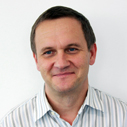
|
European XFEL: Unique possibilities for X-ray spectrometry research
The European X-ray free electron laser (XFEL) is a new international research installation that is currently under construction in the Hamburg area in Germany. The facility will generate new knowledge in almost all the technical and scientific disciplines that are shaping our daily life – including nanotechnology, medicine, pharmaceutics, chemistry, materials science, power engineering and electronics.
The ultra-high brilliance femtosecond X-ray flashes of coherent radiation will be produced in a 3.4-kilometre long facility. Most of it will be housed in tunnels deep below ground. In its start-up configuration, the European XFEL will comprise 3 self-amplified spontaneous emission (SASE) light sources – undulators operating in energy ranges 3 – 25 keV (SASE 1 and SASE 2) and 0.2 – 3 keV (SASE 3), respectively. The world-unique feature of this free electron laser is the possibility to provide per second up to 27.000 ultra-short (10 – 100 fs), ultra-high brilliance flashes that makes this facility particular suitable for spectrometry research in the range of moderate and hard X-ray photons.
In this presentation, selected examples of experiments will be given and plans for implementation of dedicated instrumentation at the European XFEL will be described. |
Since 2010 Serguei L. Molodtsov is Scientific Director of the European XFEL. In 1987 he obtained his PhD on “Photoemission Study of Electron-Phonon Scattering in Insulators” at the Leningrad State University and received an Alexander-von-Humboldt Fellowship for a research stay at the Free University Berlin. This cooperation led to the foundation of the Russian-German Laboratory at BESSY – a highly successful bilateral project that is already in operation for almost 15 years, for the benefits of both countries. After having been research associate at St. Petersburg State University, he moved in 1997 to the Institute for Surface and Microstructure Physics at the Dresden University of Technology, where he became Associate Professor in 2000. In 2001, he also became Leading Scientist at the Russian-German Laboratory at BESSY II. Since 2013, Serguei Molodtsov also holds a professorship at the Freiberg University of Technology |
Richard NEUTZE
Department of chemistry and molecular biology
University of Gothenburg
Gothenburg
Sweden
 |
Time resolved studies of ultrafast structural changes in membrane proteins |
Richard Neutze took his PhD in Physics in 1995 from the University of Canterbury (New Zealand). He was introduced to the field of molecular biophysics at Oxford University (England); took a postdoc at Tübingen University (Germany); and then moved to Uppsala University (Sweden). In 1998 Neutze became Assistant Professor at Uppsala University, and he moved his group to Chalmers University of Technology in 2000. In 2006 Neutze was appointed Professor of Biochemistry at the University of Gothenburg. Neutze has worked on the structural biology of aquaporins; bacterial rhodopsins; photosynthetic reaction centres; time-resolved diffraction and time-resolved wide angle X-ray scattering studies of membrane proteins. He is recognized as one of the pioneers developing new approaches to structural biology using x-ray free electron laser radiation.
|
Silvia PANI
Applied Radiation Physics
University of Surrey
Guildford
UK
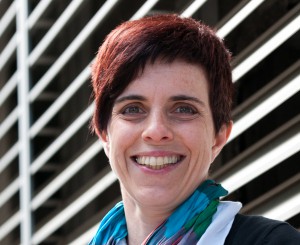 |
Use of pixellated spectroscopic detectors for quantitative X-ray mammography
A pixellated spectroscopic detector is a two-dimensional detector providing, for each pixel, a full spectrum of the radiation detected. This is particularly suitable for medical imaging, as it effectively allows the simultaneous acquisition of an arbitrary number of images at different energies, thus making multiple-energy imaging possible without the dose implications and the motion artifacts resulting from multiple exposures.
In the case of mammography, this is particularly important due to the high radiosensitivity of the organ and to the low contrast of breast masses against their background. Dual energy imaging allows, in particular, enhanced visibility and quantification of the surface concentration of contrast agent as well as quantification of the amount of glandular tissue in the breast, correlated to the risk for breast cancer.
In this talk the current results on quantitative breast imaging, as well as the technological challenges, will be discussed. |
Silvia Pani is a lecturer in Applied Radiation Physics at the University of Surrey, where she runs the MSc in Medical Physics. She has previously worked at the Elettra synchrotron light source in Italy, at University College London and at Queen Mary, University of London.
She has worked on various X-ray techniques for medical and non-medical applications, including mammography, tissue characterization and contraband detection.
Her main focus is now the use of position-sensitive, spectroscopic X-ray detectors for quantitative transmission and diffraction imaging.
She is author and co-author of over 70 peer-review publications. |
Francesco Paolo ROMANO
IBAM-CNR
Catania
Italy
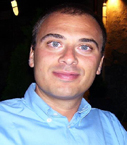 |
Developments on Full Field XRF and Full Field PIXE by using an X-ray camera with high resolution
X-ray Fluorescence imaging is a well-established technique for mapping the spatial distribution of chemical elements in a sample. Generally, elemental images are obtained by scanning the samples point-by-point with a primary X-ray beam focused to a small dimension. As a recent alternative, the Full Field XRF (FF-XRF) allows a fast elemental imaging avoiding the scanning. In this case, a broad X-ray beam irradiates the full area of a sample. The X-ray fluorescence induced by the primary radiation is detected through a pinhole collimator or a polycapillary installed in front of a position- and energy-sensitive detector.
Up to date, the use of FF-XRF in a routine analytical work has been limited due to the high costs of the advanced detectors available for applying the full field approach. In recent time, it was demonstrated the possibility of performing the FF-XRF with a conventional CCD detector. The development of a special photon counting technique allowed operating a near real time full field elemental imaging with high energy and high spatial resolution. Main drawback in using a low cost CCD detector is the low frame rate; however, this limit can be reasonably compensated by working with high intensity beams.
In this work, recent developments on FF-XRF and FF-PIXE are illustrated and complemented with results in multidisciplinary applications. |
Francesco Paolo Romano is a full time researcher at the Institute for Archaeological and Monumental Heritage of the National Research Council (IBAM-CNR) in Italy. He established his scientific activity in the area of X-ray spectrometry. Currently he is leading the LANDIS laboratory at the Laboratori Nazionali del Sud of the National Institute of Nuclear Physics (LNS-INFN) in Catania. His research is focused on the development of novel instrumentation and analytical methodologies based on X-rays and ion beam techniques for the nondestructive characterization of Cultural Heritage and Archaeological material. Among the others, main achievements of his scientific activity concern the development of a Full Field XRF technique and different upgrades of a portable alpha-PIXE spectrometer. He is author of more than 150 scientific works with over 60 publications in international peer-reviewed journals. |
| Jose Paulo SANTOS
Faculdade de Ciências e Tecnologia (Faculty of Science and Technology; FCT)
Universidade NOVA de Lisboa
Lisbon
Portugal
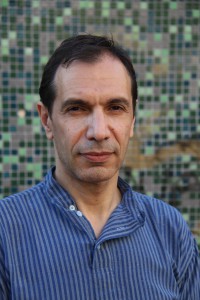
|
Fundamental parameters in atomic systems
Accurate critical data related to the interactions of X-rays with matter (“fundamental parameters”) are required for the whole range of applications, and the lack of recent reliable values with low associated uncertainties was pointed out by the scientific and industrial communities. Such accurate data are needed for the whole range of applications, including: medical technology, nanotechnology, renewable energy, environmental control, materials analysis, laboratorial and astrophysical plasma, and atomic clocks.
It will be presented the theoretical and experimental methods used in the determination of several atomic parameters such as the transition energies, line widths and fluorescence yields. |
Tecnologia (Faculty of Science and Technology; FCT) of the Universidade NOVA de Lisboa (Lisbon, Portugal) and Associate Professor of Research in the Université Pierre et Marie Curie, Sorbonnes Universités (Paris, France). At the present he is Head of the Physics Department of the Universidade NOVA de Lisboa, Coordinator of the Research Center LIBPhys-UNL , and Director of the NOVA.FCT Editorial (Publishing House of the FCT).
José Paulo Santos has developed research in the relativistic calculations of atomic structure of different systems, such as highly charged ions, exotic atoms and superheavy elements, and of radiative and radiationless transitions, giving special emphasis to the two-photon forbidden transitions. He has also conducted the development of analytical expressions to obtain the total ionization cross section by electron impact of atomic systems from threshold to relativistic energies. Still in the field of atomic physics, he collaborated in the absolute (reference-free) measurement of transition energy values in highly charged ions with the highest-level accuracy achieved (2.5 ppm) and specialized himself in the interpretation of x-rays and visible plasma spectra. |
| Manoj TIWARI
Indus Synchrotrons Utilization Division, Raja Ramanna Centre for Advanced Technology,
Indore,
Madhya Pradesh,
India |
Effect of temporal coherence in surface x-ray standing analysis of nano-structured materials
Over the past several decades, x-ray standing wave (XSW) technique has been developed as a non-destructive element specific probe that promises evaluation of impurity atoms over nanometer to angstrom length scale resolutions. The method has been widely exploited for a large number of applications including determination of positions of impurity atoms in single crystals, dispersion of chemically bound atoms and metal nanoparticles on surfaces as well as for the study of interface structure and density variations in synthetic periodic multilayer structures. Despite these remarkable advancements in both fundamental understanding and practical applications of the technique, the influence of a few undetermined effect is still widely lacking. A largely unexplored area in the XSW analysis is the realization of temporal coherence properties of primary incident x-rays that can influence the XSW field intensity profile above a reflector surface. In the present work, we have extended the analysis method beyond the zero band width approximation in order to include the influence of longitudinal coherence properties of the incoming x-ray wave field in the XSW analysis.
We have developed a GUI-CATGIXRF software tool for the analysis of angle dependent XRR profile and fluorescence intensities emitted from a thin layered specimen. The combined analysis of XRR and GIXRF data allows one to determine consistent microstructural parameters (i.e., thickness, roughness, density variations, and interface diffusion) of nano-structured materials, with improved accuracies. Specific application areas of the GUI-CATGIXRF computation tool for the structural characterization of periodic x-ray multilayer structures, TiO2 nanospheres, as a photo-catalyst, for solar water splitting applications and GIXRF assisted depth resolved x-ray absorption fine structure (XAFS) studies for the investigation of chemical state and electronic structure of the nano-structured materials will be explored. |
|
Joel ULLOM
Project Leader, Quantum Sensors
NIST
USA
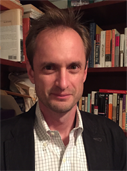 |
The science of microcalorimeter spectrometers and science with microcalorimeter spectrometers
X-ray spectrometers based on arrays of low temperature microcalorimeters have recently emerged as tools for beamline and laboratory science [1]. We have pursued microcalorimeters based on metal films that are electrically biased into the superconducting-to-normal transition. Microcalorimeter x-ray spectrometers developed at NIST have now been disseminated to three light sources, two particle accelerators, and several laboratory-scale experiments. The arrays of energy-dispersive sensors in these spectrometers combine large active areas with spectral resolving powers typically associated with wavelength-dispersive detectors. In this presentation, we describe the performance of existing 240 pixel instruments and ongoing work to develop and read out larger arrays of faster pixels. We also describe some recent science results. These include the determination of the absolute energies of several lanthanide x-ray transitions with metrological precision. We also describe recent demonstrations of hard x-ray absorption and emission spectroscopy with few-picosecond time resolution using a tabletop apparatus.
[1] J. N. Ullom, D. A. Bennett, Superconducting Science and Technology 28 (2015) 084003. |
Dr. Joel Ullom is the Group Leader for Quantum Sensors at the National Institute of Standards and Technology (NIST) in Boulder, Colorado and also a Lecturer in the Physics Department at the Boulder campus of the University of Colorado.
His research is focused on the development and application of cryogenic detectors including superconducting transition-edge sensors and microwave kinetic inductance detectors. Applications for these ultra-sensitive devices span the electromagnetic spectrum and include x-ray materials analysis and the determination of x-ray fundamental parameters.
Dr. Ullom has received a number of awards including Gold, Silver, and Bronze medals from the U.S. Department of Commerce, the Arthur S. Flemming award, the R. W. Boom award, a Presidential Early Career award, and a Lawrence post-doctoral fellowship. He is an author on over 150 peer-reviewed publications including a recent summary article: J. N. Ullom and D. A. Bennett, “Review of superconducting transition-edge sensors for x-ray and gamma-ray spectroscopy,” Superconducting Science and Technology 28 (2015) 084003.
|
| Piet VAN ESPEN
Departement Chemie
Universiteit Antwerpen
Antwerp
Belgium |
Evaluation of huge spectral datasets resulting from x-ray fluorescence imaging
Scanning x-ray fluorescence is a very popular technique for the investigation of art objects, especially paintings. When large areas are scanned even with a pixel size as large as 0.5 mm an enormous amount of spectral data is generated. Analysing an area of a painting of 1 m2 results in 4 million spectra or 16 GB of data. Such data sets require special procedures for handling and interpretation.
Using a simple and very fast spectral compression technique the data size can be reduced by a factor 10. In combination with a specially designed file structure spectral data of each pixel can be stored and retrieved very efficiently.
The interpretation of the spectral data poses a bigger problem. Non-linear least squares fitting is often used to obtain net peak areas. This method is interesting because it can deal with gain and resolution changes of the spectrometer and handle a number of spectral artefacts such escape and sum peaks. However because of its inherently iterative nature the method is computational slow. With a processing time of 1s/spectrum, it would take 46 days to fit 4 million spectra!!!
We developed a “hybrid” fitting procedure, which combines the flexibility of non-linear least squares fitting with the speed of linear least squares fitting. In this way the time to evaluate a spectrum could be reduced by a factor 1000 or more. Analysing 4 million spectra can be done in more or less one hour.
The method has been implemented in a software package called bAxil. We will discuss the details of the implementation and show some examples. Also some of the “philosophical” aspects of linear and non-linear fitting will be discussed.
|
|